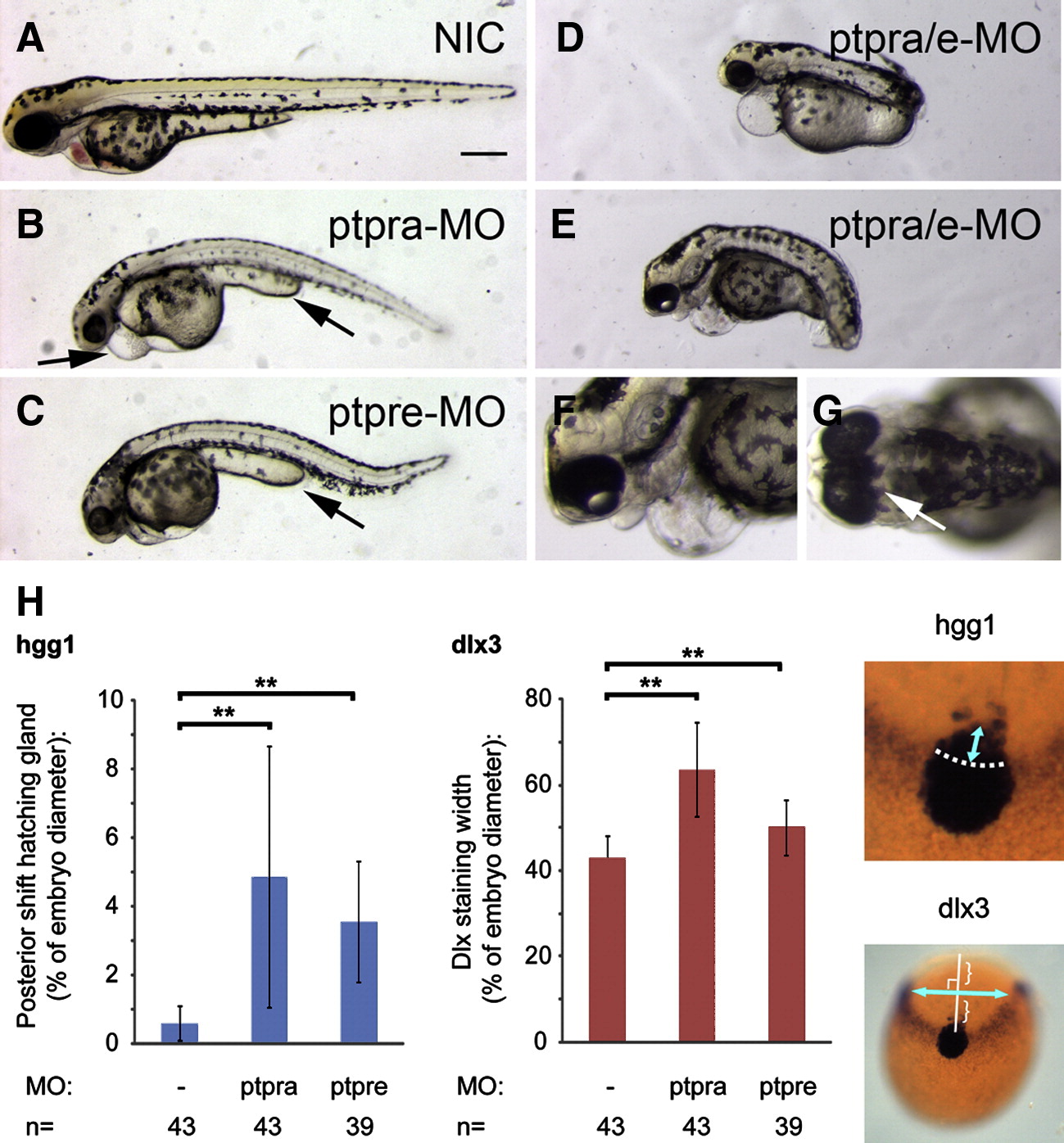Fig. 2 RPTPα and PTPε knockdown fish show convergence and extension defects. Wildtype zebrafish embryos were micro-injected with 0.3 ng ptpra-MO (B), 2.5 ng ptprea-MO + 2.5 ng ptpreb-MO (C) or triple injected with ptpra-MO (0.15 ng) and ptpre-MO (1 ng each, D–G) each at the 1 cell stage and grown to 48 hpf. Pictures show representative embryos. A non-injected embryo is included for reference (A). Arrows indicate shorter yolk extension (B, C), cardiac edema (B) or fused eyes (G). (H) Zebrafish embryos micro-injected with ptpra-MO (0.3 ng/embryo) or ptpre-MO (2.5 ng ptprea-MO + 2.5 ng ptpreb-MO/embryo) at the one cell stage and non-injected control embryos were grown to 1 somite stage and fixed. Whole mount in situ staining was performed using probes for dlx3 and hgg1. The resulting staining patterns were analyzed using ImageJ software, measuring the posterior shift of the hgg1 staining as indicated in the panel on the right, and measuring the width of the dlx3 staining half-way between the hatching gland and the edge of the embryo when seen from top view with the hatching gland positioned in the middle. The measured distances were plotted as the average posterior shift or width as a percentage of the total width of the embryo (yolk). Error bars indicate standard deviations, Student t-tests (2 tailed, assuming unequal variance) were performed between groups indicated, ** indicates a P-value < 0.001. Scale bars = 250 μm. Dlx3/hgg1 in situ data can be compared within experiments, but not between experiments because of subtle differences in experimental conditions. This experiment has been done at least three times. A representative experiment is depicted here.
Reprinted from Developmental Biology, 340(2), van Eekelen, M., Runtuwene, V., Overvoorde, J., and den Hertog, J., RPTPalpha and PTPepsilon Signaling via Fyn/Yes and RhoA is Essential for Zebrafish Convergence and Extension Cell Movements during Gastrulation, 626-639, Copyright (2010) with permission from Elsevier. Full text @ Dev. Biol.

